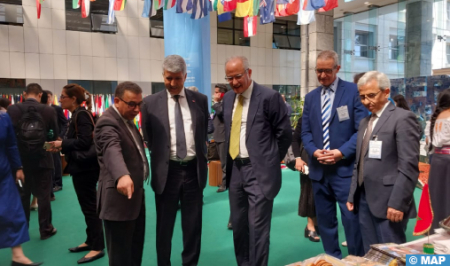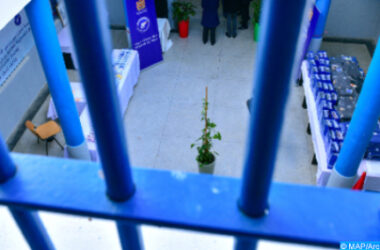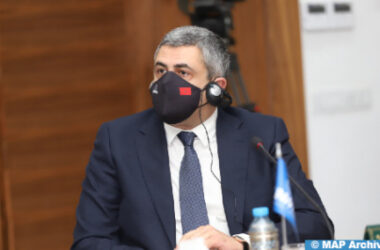The director general of the FAO, Qu Dongyu, has given the systems oasis-pastoral “Ksour Figuig” and agro sylvo-pastoral argan “Ait Souab-Ait Mansour”, respectively enrolled in the SIPAM in 2022 and 2018, certificates of official recognition for their resilience, their uniqueness and the wealth of their resources.
The two Moroccan locations embody the sustainable commitment of the Kingdom, one of the richest Mediterranean countries in terms of biodiversity and number of endemic species, under the Impulse of HM King Mohammed VI.
The Minister of Agriculture, Maritime Fisheries, Rural Development and Water and Forests, Mohamed Sadiki, at the head of the official delegation, welcomed, on this occasion, the fruitful cooperation between the Kingdom and the FAO Representation, expressing the commitment of his department to extend this recognition to other eligible sites within the framework of the SIPAM Initiative.
The Kingdom aspires to launch concrete projects aimed at preserving the sustainable agricultural heritage and strengthening the resilience of the populations and territories concerned, said Sadiki, at this ceremony which took place in the presence of the Ambassador of the Kingdom to the UN agencies based in Rome, Youssef Balla.
He noted, in this regard, that these locations are in addition to SIPAM Imilchil-Amellagou (High Atlas East), recognized in June 2011 and considered as a pilot site of cold oases.
According to the official, the SIPAM program provides a lever that should “allow us to consolidate efforts to mobilize sustainable and holistic solutions that take into account sustainable development, encouraging inclusive economic growth, the fight against inequality and greater resilience of populations to environmental change, especially under the pressure of climate change.”
For his part, the Director General of the UN organization stressed that the ISDRs have become “reservoirs of biological diversity”, providing an opportunity to increase understanding and awareness of biodiversity issues and to celebrate the local communities that are their custodians.
From now on, “we will continue to work together to achieve sustainable rural development by implementing new actions, developing joint projects and twinning programs and building capacity and learning from each other,” he said.
According to the FAO, the SIPAMs are agro-ecosystems inhabited by communities that live in a complex relationship with their territory. These sites are resilient systems characterized by remarkable agrobiodiversity, traditional knowledge, invaluable crops and landscapes, sustainably managed by farmers, herders, fishers and forest people to contribute to their livelihoods and food security.
Launched in 2002 at the World Summit on Sustainable Development in Johannesburg, the program builds on the global and national recognition of the importance of agricultural heritage systems and functions as an institutional support for their safeguarding. The GIAHS list consists of 72 systems in 23 countries around the world.
For Morocco, the diversity and quality of agricultural production, gastronomy, agri-cultural knowledge, crafts, cultural, social, clothing and religious traditions make the Kingdom a privileged partner for the SIPAM initiative.
In addition to the awarding of certificates and a session presenting the characteristics and significance of all the newly awarded SIPAMs, the event will also offer a chance to taste food and products from the sites, and to enjoy a virtual and fully immersive exhibition of sites and sounds, giving meaning to life in these communities around the world.










